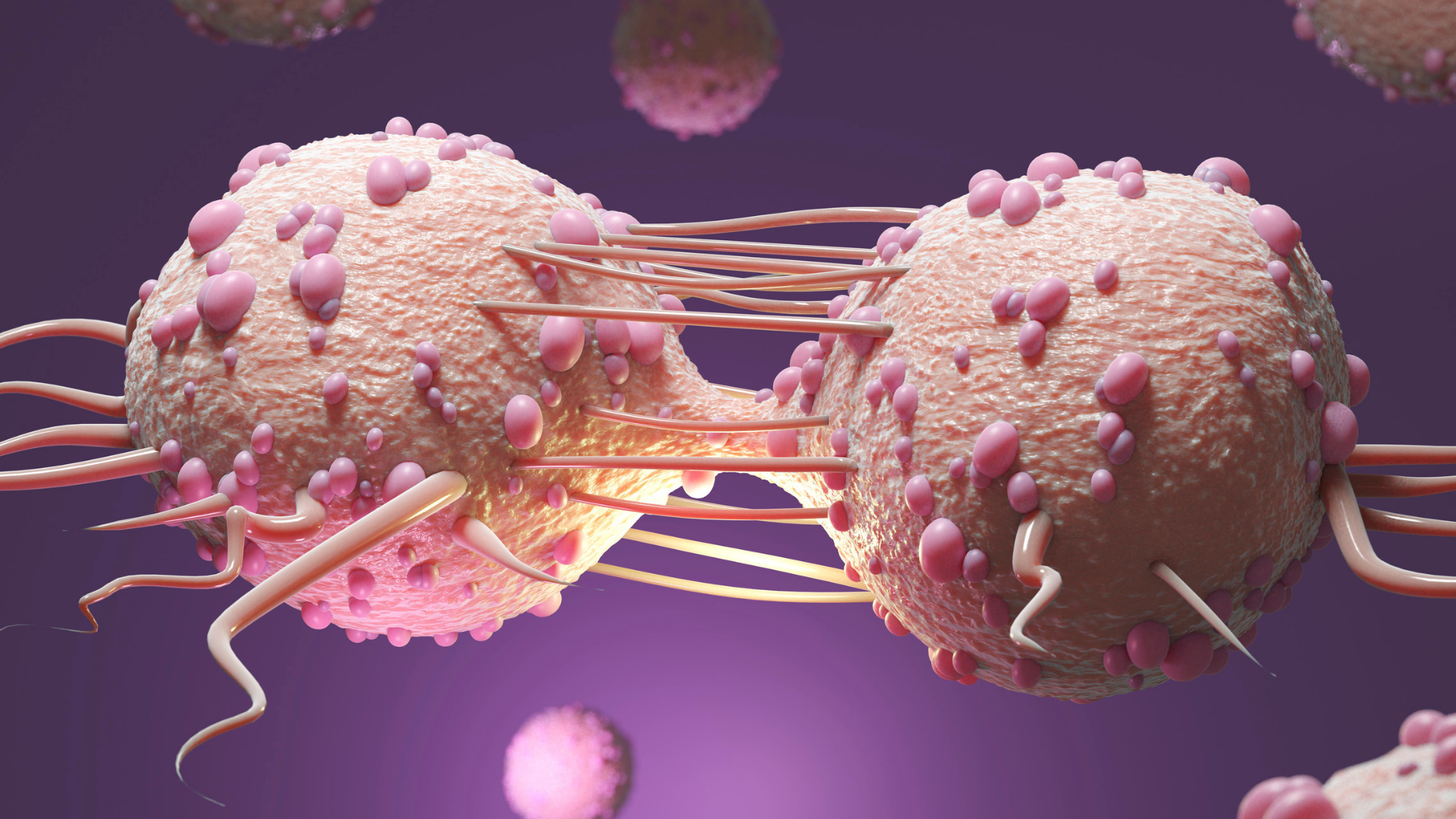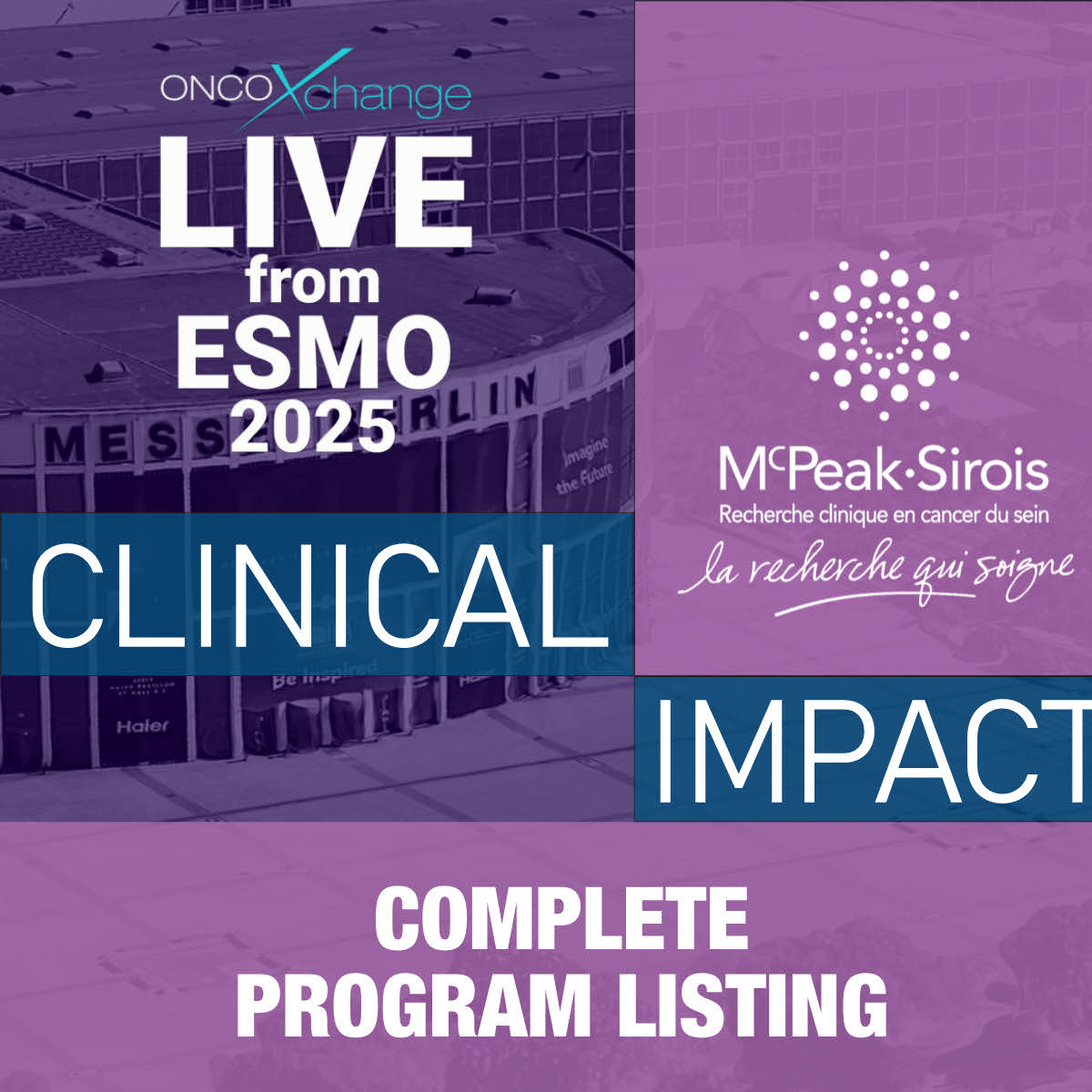
SABCS 2021: Data support T-DXd as second-line standard in HER2-positive breast cancer
December 2021
By Wayne Kuznar for oncoXchange
In the phase 3 DESTINY-Breast03 study, trastuzumab deruxtecan (T-DXd) as second-line therapy for patients with HER2-positive metastatic or unresesctable locally advanced breast cancer demonstrated superior efficacy over over trastuzumab emtansine (T-DM1) in patients with brain metastases at baseline. The subgroup data were presented by Sara Hurvitz, MD, at the 2021 San Antonio Breast Cancer Symposium (SABCS).
In addition, T-DXd is associated with substantial intracranial response and a reduction in central nervous system (CNS) disease.
Overall results from DESTINY-Breast03, presented earlier in 2021, saw a significant improvement in progression-free survival (PFS) with T-DXd over T-DM1 (HR, 0.28; P = 7.8 x10-22) at a median follow-up of 15.9 months.
“These data support T-DXd becoming the standard of care for second-line HER2-positive metastatic breast cancer,” said Dr. Hurvitz, co-director of the Santa Monica-University of California Los Angeles (UCLA) Outpatient Oncology Practices, and director of the Breast Cancer Clinical Trials Program at UCLA.
DESTINY-Breast03 investigated T-DXd versus T-DM1 in patients with HER2-positive metastatic or unresectable locally advanced breast cancer previously treated with trastuzumab and a taxane in the metastatic setting, or progression during or within 6 months after completing adjuvant therapy including trastuzumab with a taxane. A total of 524 patients were randomized 1:1 to treatment with T-DXd, 5.4 mg/kg IV every 3 weeks, or T-DM1 at the FDA approved dosing schedule of 3.6 mg/kg IV every 3 weeks.
In patients with stable baseline brain metastases, the median PFS was 15.0 months with T-DXd versus 3.0 months with T-DM1 (HR 0.25; 95% CI, 0.13-0.45). The 12-month PFS rates in this patient population were 72.0% versus 20.9%), respectively.
In those without baseline metastases, the median PFS was not evaluable in the T-DXd arm versus 7.1 months in the T-DM1 arm (HR, 0.30; 95% CI, 0.22-0.40). The 12-month PFS rates were 76.5% versus 36.4 in this population, respectively.
The intracranial complete response rates were 27.8% for T-DXd versus 2.8% for T-DM1.
“These data regarding the intracranial objective response are very intriguing and exciting, but we need larger studies that are ongoing to look at the activity of T-DXd in untreated and actively progressing brain metastases,” said Dr. Hurvitz.
T-DXd also showed consistent benefit over T-DM1 across patient subgroups based on hormone receptor status, prior pertuzumab treatment, presence/absence of visceral disease, and number of prior lines of therapy.
HER-2 heterogeneity
Clinical management strategies to reduce the heterogeneity in treatment outcomes for patients with HER2-positive breast cancer were discussed by Sara M. Tolaney, MD, MPH, in a forum session at SABCS.
About 50% of HER2-positive tumors are also hormone receptor (HR)-positive, which have proven to be relatively resistant to endocrine therapy in both the early and advanced settings compared with HER-2-negative disease, said Dr. Tolaney, from Dana Farber Cancer Institute, Boston. Combination strategies that target both concurrently have been explored.
Adding HER2-targeted therapy to an endocrine backbone is one approach that has improved PFS but not overall survival. Dual HER2-directed therapy has also improved PFS compared with HER2-directed monotherapy with endocrine therapy.
Novel treatment strategies for HR-positive HER2-positive disease include the addition of CDK4/6 inhibitors to endocrine therapy, with a number of studies currently enrolling patients.
In HR-positive HER2-positive disease, early work is ongoing looking at possibly more potent anti-estrogen agents with oral selective estrogen receptor SERDs and HER2-directed therapies, with and without CDK4/6 inhibition, in the metastatic setting. “We’re going to need to earn how to optimally combine endocrine therapy with HER2-directed therapies,” said Dr. Tolaney.
A better understanding of the use of antibody-drug conjugates (ADCs) with concurrent endocrine therapy is also needed for this patient population.
Heterogenous intratumoral HER2 expression is associated with reduced sensitivity to HER2-directed treatment. HER2 heterogeneity can limit the benefits to T-DM1, but T-DXd potentially can overcome this limit by a bystander effect, she said.
HER2 is a continuous biomarker. HER2-low positive disease, the majority of which have low HER2 signaling, is not likely a new biologic subtype of disease but the use of novel ADCs that can deliver high levels of cytotoxic payload into the cell could be effective, and multiple ADCs are being explored in this space.
Also discussing HER2 heterogeneity, within HER2-positive disease are tumors that have high ERBB2 levels, are HER2-enriched, are PIK3CA wild type, are HR-negative, and have high infiltration of tumor lymphocytes, all of which are associated with tumors that are more HER2-addicted, said Aleix Prat, MD, PhD, from Hospital Clinic Barcelona, Spain. “By looking at tumor heterogeneity within HER2-positive disease, we see different responses and clinical outcomes,” he said.
While predictive of pathologic complete response, these biomarkers do not always predict survival outcome and biomarkers of survival are difficult to identify.
On-treatment biomarkers, in particular tumor cellularity and number of tumor-infiltrating lymphocytes, may be superior predictors of survival outcomes. In the end, a combination of biological variables is needed to better predict outcome, he concluded.

Comments (0)